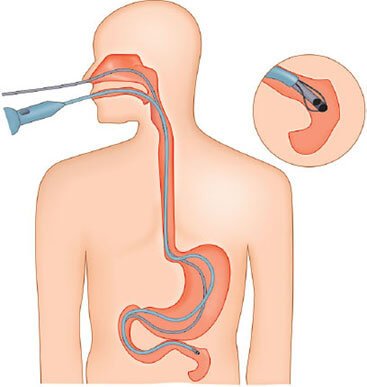
This procedure involves placing a thin, flexible tube through the nose and advancing it into the stomach (nasogastric) or the jejunum, a part of the small intestine (nasojejunal). These tubes are used for feeding, medication administration, or gastric decompression when a patient cannot eat by mouth.
The placement can be done at the bedside or under endoscopic guidance for accuracy and safety, especially in complex cases. This ensures minimal discomfort for the patient and reduces the risk of complications, making the procedure more efficient and reliable.
Here are some common queries regarding Nasogastric and Nasojejunal Tube Placement:
The procedure may cause mild discomfort during insertion, but it is not usually painful. Local anesthetic spray is often used to minimize discomfort.
Nasogastric tubes are typically used for short-term feeding (up to 4–6 weeks), while nasojejunal tubes may be used slightly longer depending on the patient’s needs and medical condition.
Risks are minimal when performed by trained professionals. Possible complications include nasal irritation, misplacement, or blockage of the tube, all of which are manageable.